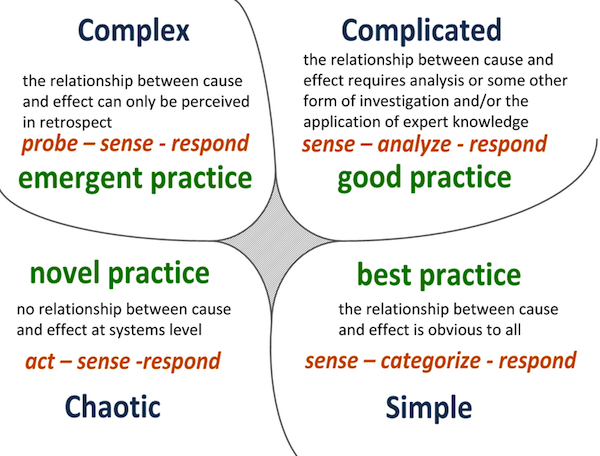“The first rule of any technology used in a business is that automation applied to an efficient operation will magnify the efficiency. The second is that automation applied to an inefficient operation will magnify the inefficiency.” – BILL GATES
The statement by Gates underscores the importance of clearly defining your vision, business model, and process(es) before implementing technology to try and remedy the ills of your organization. But the ironic reality is that technology advancements are moving so fast that organizations are being forced to fight on numerous fronts at the same time; increased competition, loss of brand control, new communication channels, much of which is being enabled by and executed on employee and customer owned devices.
Our networked world is exposing boundary-less pathways where ideas, ideals, and ideologies collide. Breakthrough innovations wage war with best practices. Incumbent practices often limit creativity. Efficient industrial age production machines wrestle against emerging open, agile, and collaborative organizations.
While the world is indeed changing, there is significant risk in exalting and proclaiming these new ideas as gospel. I’ve read “rah rah” phrases like the world is now flat, email is dead, or that the social enterprise is the definitive future.
Blanket proclamations ignore the fact that there are so many variables affecting each industry, geography, audience, company, department, and individual that to prescribe a blanket solution over the entire world is ignorant at best, and potentially catastrophic in some cases.
Trying to reinvent the wheel in a tried and true practice that is already well defined is simply a waste of time. However, holding too long to traditional systems and practices can mean a slow and steady decline, or a seemingly sudden end to an organization’s life.
A recent blog post on the Harvard Business Review titled “It’s Time to Rethink Continuous Improvement” starts off with this:
Six Sigma, Kaizen, Lean, and other variations on continuous improvement can be hazardous to your organization’s health. While it may be heresy to say this, recent evidence from Japan and elsewhere suggests that it’s time to question these methods.
The post goes on to describe the tension and potential polarization that often exists between continuous improvement and breakthrough innovation, and sparked a really good debate in the comments that is worth reading through.
It also brought to mind a similar debate that took place on Mitch Lieberman’s blogpost titled “Best Practices for Social CRM” a few months ago.
So, how do we know how to allocate our organization’s resources effectively? A decision framework for executives called the Cynefin framework, created by Dave Snowden provides some clues.
The Cynefin framework has five domains. The first four domains are:
Simple, in which the relationship between cause and effect is obvious to all, the approach is to Sense – Categorise – Respond and we can apply best practice.
Complicated, in which the relationship between cause and effect requires analysis or some other form of investigation and/or the application of expert knowledge, the approach is to Sense – Analyze – Respond and we can apply good practice.
Complex, in which the relationship between cause and effect can only be perceived in retrospect, but not in advance, the approach is to Probe – Sense – Respond and we can sense emergent practice.
Chaotic, in which there is no relationship between cause and effect at systems level, the approach is to Act – Sense – Respond and we can discover novel practice.
The fifth domain is Disorder, which is the state of not knowing what type of causality exists, in which state people will revert to their own comfort zone in making a decision. In full use, the Cynefin framework has sub-domains, and the boundary between simple and chaotic is seen as a catastrophic one: complacency leads to failure.
Identifying what type of environment exists helps to define what type of solution is most appropriate. In today’s business environment, more and more may be falling into the complex and chaotic, but certainly a large portion of business activities still fall into the simple and complicated domains.
Mastering the art of blending approaches to improve the known best practices, using analytics to solve new problems, while probing new frontiers to look for new areas of breakthrough innovation is a leadership imperative.
What is your approach to achieving this balance?
|
|
This post was written as part of the IBM for Midsize Business program, which provides midsize businesses with the tools, expertise and solutions they need to become engines of a smarter planet. |
Comments
Trackbacks
-
[…] a business (and societal) environment where more of the “typical” is complex and chaotic, I see this pattern playing out more often, with higher frequency, not just in the world of design, […]

Good read from @BrianVellmure: Improving the known, exploring the unknown, and innovating to be well-known http://t.co/jxNi1OLG #innovation
+1 RT @krcraft: Good read from @BrianVellmure: Improving known, exploring unknown, and innovating to be well-known http://t.co/NuyojqQW
RT @BrianVellmure: Where do best practices & continuous improvement fit in a fast changing environment? http://t.co/Ovqb6uRo #change #inn…
Interesting post by @BrianVellmure + links >> Improving the known, exploring the unknown & innovating to be well-known http://t.co/Echjv6x3